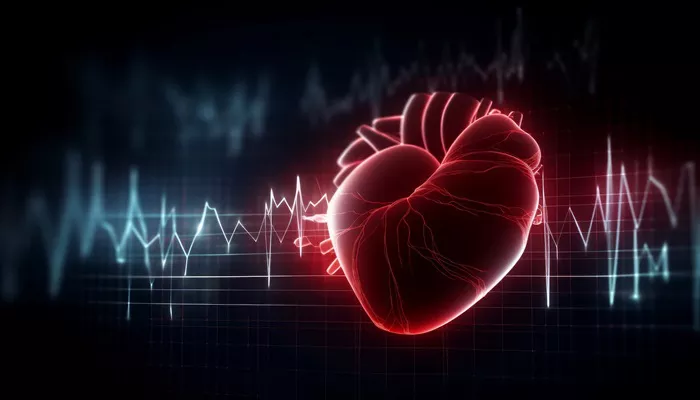Arrhythmias are irregularities in the heart’s rhythm. They can range from harmless to serious conditions that require medical intervention. Understanding what degree of arrhythmia is considered normal is important for both patients and healthcare providers. This article will explain the types of arrhythmias, their causes, symptoms, and when they may be a cause for concern. It will also discuss the normal heart rhythm and how it can vary in different situations.
Understanding Heart Rhythm
The heart’s rhythm is controlled by electrical signals that coordinate the heart’s contractions. In a normal heart, these signals originate from the sinoatrial (SA) node, the heart’s natural pacemaker. The signals travel through the heart muscle, prompting it to contract and pump blood. The typical resting heart rate for adults ranges from 60 to 100 beats per minute.
However, variations can occur based on age, activity level, and overall health.
Types of Arrhythmias
Arrhythmias can be classified into several types based on their origin and effect on heart function:
Bradycardia: This is a slower than normal heart rate, typically below 60 beats per minute. It may occur in athletes or during sleep and can be normal in those contexts.
Tachycardia: This is a faster than normal heart rate, usually above 100 beats per minute. While it can be a normal response to exercise or stress, persistent tachycardia can indicate a problem.
Atrial Fibrillation (AFib): This is a common arrhythmia characterized by rapid, chaotic electrical signals in the atria. AFib can lead to stroke and heart failure if not managed properly.
Ventricular Fibrillation (VFib): This is a life-threatening condition where the ventricles quiver instead of pumping blood effectively. VFib requires immediate medical attention.
Premature Contractions: These are early heartbeats that can occur in both the atria and ventricles. They are common and often harmless, especially in healthy individuals.
Normal Variations in Heart Rhythm
It’s essential to recognize that variations in heart rhythm can be normal. Here are some common scenarios where arrhythmias may not be concerning:
Exercise-Induced Changes
During physical activity, it is normal for the heart rate to increase significantly. This physiological response allows the heart to meet the body’s increased demand for oxygen. After exercise, the heart rate typically returns to normal within a few minutes.
Sleep-Related Changes
While sleeping, the heart rate usually slows down, often dropping below 60 beats per minute. This bradycardia is common and not usually a cause for concern.
Age-Related Changes
As people age, the heart’s electrical system may change, leading to a higher prevalence of arrhythmias. Older adults may experience occasional premature contractions or slight variations in heart rate, which can be normal.
When Is Arrhythmia Considered Normal?
Normal arrhythmias are generally transient and do not cause significant symptoms or complications. Here are some indicators of normal arrhythmias:
Frequency and Duration: Occasional premature beats that do not occur frequently or last a short time are often benign.
Absence of Symptoms: If an individual experiences arrhythmias without any symptoms such as dizziness, palpitations, or chest pain, they are often not a cause for concern.
Normal Heart Function: When an arrhythmia does not impair heart function or blood flow, it is typically considered normal.
Presence of Other Factors: Factors such as anxiety, caffeine intake, or stress can trigger brief episodes of arrhythmia that resolve once the triggering factor is removed.
Monitoring And Diagnosis
For those experiencing arrhythmias, healthcare providers may recommend monitoring the heart’s rhythm using various methods:
Electrocardiogram (ECG): This test measures the electrical activity of the heart and can help identify the type of arrhythmia.
Holter Monitor: A portable device worn for 24-48 hours that records the heart’s rhythm continuously. It helps capture sporadic arrhythmias that may not be evident during a standard ECG.
Event Monitor: Similar to a Holter monitor, but it is used for longer periods (up to 30 days). It records the heart’s rhythm when the patient activates it during symptoms.
Echocardiogram: This ultrasound test assesses heart structure and function, providing additional information about the heart’s health.
When to Seek Medical Attention
While many arrhythmias are benign, some symptoms warrant immediate medical attention:
Severe Dizziness or Lightheadedness: This may indicate insufficient blood flow to the brain.
Chest Pain or Discomfort: Any chest pain should be evaluated promptly, as it may signal a serious condition.
Shortness of Breath: Difficulty breathing can be a sign of heart failure or other cardiac issues.
Fainting: This could indicate a severe arrhythmia or other cardiovascular problems.
Conclusion
In summary, certain degrees of arrhythmia can be considered normal under specific circumstances. Variations in heart rhythm often occur due to exercise, sleep, or age-related changes and do not necessarily indicate a health issue. However, it is crucial to be aware of the symptoms and seek medical attention when necessary.
Related topics:


